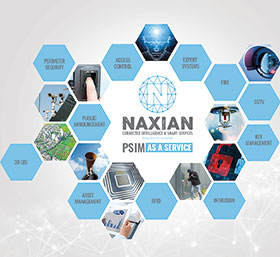

The idea to use a form of autonomous decision-making engine was birthed when Gerhard Furter, the creator of Naxian Systems’ ANNIE (Artificial Neural Network Inside Everything), was busy with a project for a government department in the justice sphere. It was realised that a lot of the decisions that the operators had to make were very habitual, but also based on more information than a ‘normal’ human could realistically process. These decisions could, however, be repeated by a machine if the machine could be made to understand the ‘why’ of the decision.
Furter developed suitable algorithms and ANNIE almost immediately took over 40% to 50% of the operators’ work. “She rapidly grew as clients posed a challenge based on some strange requirements, whereafter I would engineer a way for ANNIE to solve the problem, and a new set of algorithms would be spliced into ANNIE’s persona,” says Furter.
ANNIE’s purpose is very simple: to learn about and understand the environment in which she is implemented and use this knowledge to identify when something may go wrong. In ANNIE terms, a situation in which the environment is working as it should, is referred to as state 0 (zero), or zero risk.
To understand the environment, ANNIE acquires information using whatever systems she can integrate into, and attempts to identify ‘normal’ through the use of typical behaviours exhibited by the various groups or populations of assets and people. She then benchmarks and trends anything she can measure, and identifies patterns that describe habits, processes and associations between assets, people and events.
The resulting model is a real-world depiction of what her environment looks like. She uses this model to study all changes, deviations and exceptions with the intention of not only identifying problems as they evolve, but also to anticipate (predict) when something will happen that is not advantageous to the client’s operations. ANNIE will use whatever methods the client allows to try to solve the issue, or to prevent it from actually occurring, using a simple warning SMS or launching a full-blown intervention using digital or electronic devices.
To date, ANNIE’s application has facilitated a number of positive results for organisations that include:
• Increased transparency. By applying ANNIE to historic data, organisations can for the first time make sense of big data because she indicates trends, behaviours, patterns and associations that are traditionally not exposed by business intelligence resources and tools.
• Decreased risk. By applying ANNIE to real-time data in any operational environment she is able to detect anomalies that humans can never detect. This is because she looks at everything, all of the time, and then compares this to everything she has trended as ‘typical’ from past knowledge inside an environment. For anything detected outside of typical, she will raise a ‘watch dog’, which is an early indication to organisations that something suspicious may be in progress.
• Increased profits. Because of the fact that ANNIE is aware of all environments that she is connected to, at all times, she will always find the most optimal way of deploying resources. In for example the case of maintenance of systems and devices, ANNIE will ensure that the most proficient resource is sent to a faulty site, by way of the optimal route based on traffic and weather conditions, with the right tools and/or stock in hand to resolve any technical issues on site.
“Where most other AI’s will implement features that are more suited to the boardroom or data science laboratory, ANNIE will roll up her sleeves and do the dirty work of not just analysing the data, but also causing physical changes in the environment entrusted to her,” says Furter.
The AI development team at Naxian is engaging with Microsoft as a cloud partner to ensure that ANNIE is made available as a service through cloud platforms such as Microsoft Azure. “However, as we connect billions of things to the Internet, it is unreasonable and impractical to expect that all data and signals are sent to centralised or distributed cloud environments in order to apply the AI.
“Rather, we believe that AI should sit on the edge devices themselves. Instead of the weather station, traffic analytics service, video surveillance camera, access control device, etc. having to send data to a central point in order to collaborate and produce a result through the application of AI, these devices should have the AI embedded or attached at the edge and talk to each other. Our immediate core future focus is to ensure that we ‘port’ our intelligence onto edge devices such as Raspberry Pies and other microcomputer platforms,” says Furter.
For more information contact Naxian, +27 (0)87 820 0620, bernard@naxian.co.za, www.naxian.co.za
© Technews Publishing (Pty) Ltd. | All Rights Reserved.